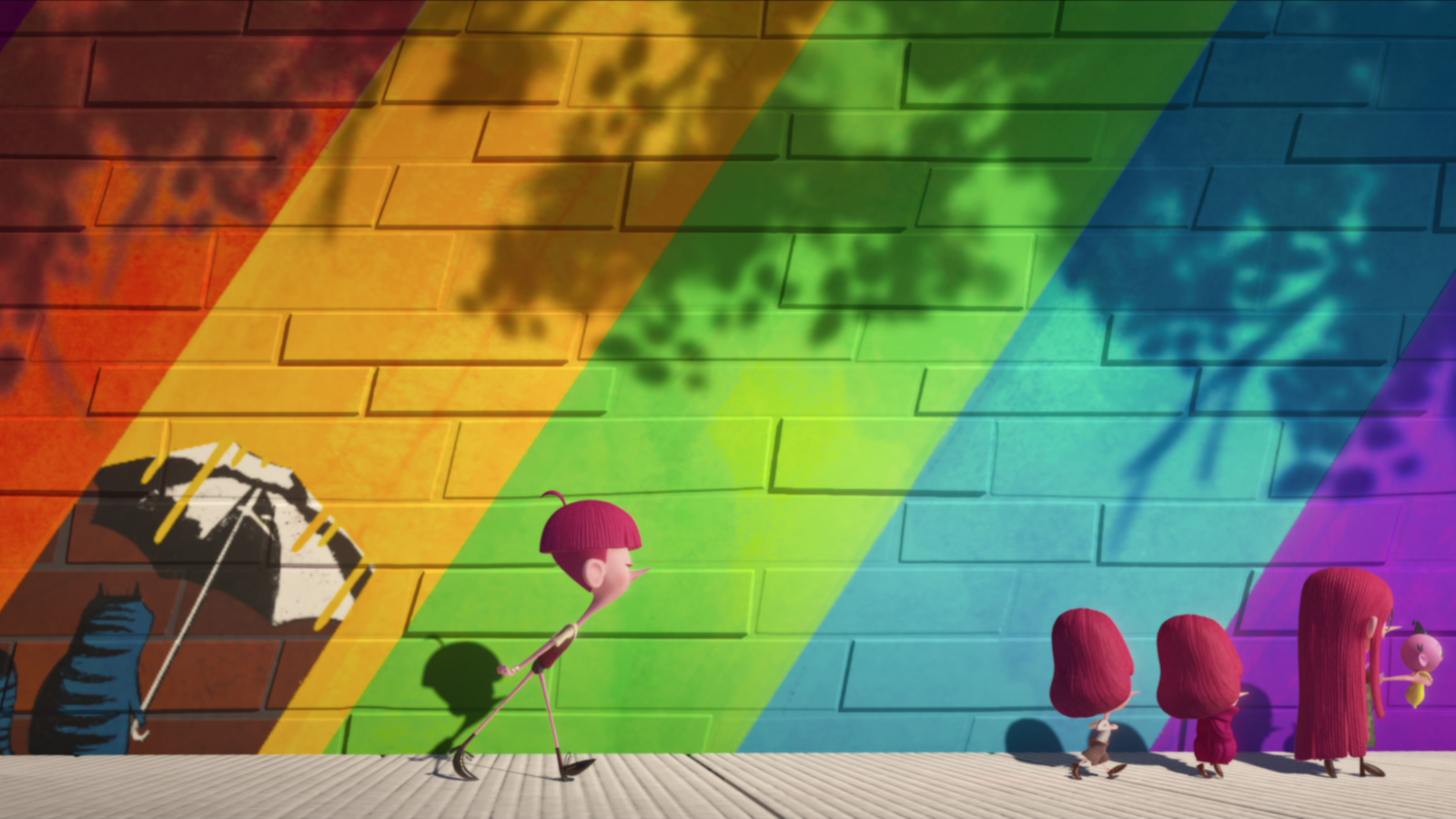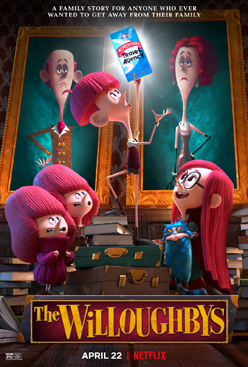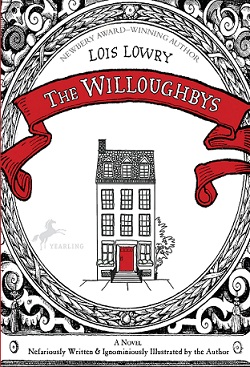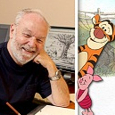 “If you love stories about families that stick together and love each other through thick and thin and it all ends happily ever after, this isn’t a film for you, okay?”
“If you love stories about families that stick together and love each other through thick and thin and it all ends happily ever after, this isn’t a film for you, okay?”
That’s how The Willoughbys starts, with the promise of a pretty unlikely story and overall film.
Indeed, Netflix’s latest animated feature is a very creative adaptation of Lois Lowry’s novel narrating the story of a dysfunctional family where selfish parents totally ignore their children. Convinced they’d be better off raising themselves, the kids hatch a sneaky plan to send their parents on vacation. The siblings then embark on their own high-flying adventure to find the true meaning of family.
This new animated gem was directed, written and produced by Kris Pearn. Born and raised in Canada, he graduated from Sheridan College. His credits include: Open Season, Surf’s Up, Arthur Christmas, Shaun the Sheep, Pirates: Band of Misfits, and Home, to name a few. He was Head of Story on Cloudy With A Chance of Meatballs, and co-directed Cloudy With A Chance of Meatballs 2.
Kris has been nominated for several Annie Awards, teaches when possible, and has given a Ted Talk called “The Optimistic Opportunity of Failure.”
But there’s really no failure in The Willoughbys!
AnimatedViews: The Willoughbys is a very original novel. How challenging was it to adapt it for the screen?
Kris Pearn: When I first read the book, what I loved was the way Lois Lowry played with tropes of literature, making fun of classic children’s books. Then, going from literature to film and having spent 25 years working in animation, there’s a lot of other things, a lot of tropes that we could make fun of. Also, what we really wanted to do was play with some of the big concepts, like children’s independence, and also try to create consistent characters. Part of the journey was really understanding the voices of our characters. Lois Lowry gave us that first idea of what the joke was and then we created our story.

AV: The cat was not in the book but became a key element of the film. He’s so well written that I can’t help but wonder: are you a cat person?
KP: I grew up on a farm, so we had a lot of cats; but I’m more of a dog person. I think it’s because as a human I’m more like a dog, you know, sticking around and making people happy. I’ve always admired cats. They always do whatever they want. So, I loved the idea of a whimsical tale where a cat would follow the thread of its own interest, and the idea that he could also talk about real things. The cat allowed us to be funny because he has that perspective on things. What’s really interesting about him is that at the beginning he’s just a spectator and then he starts to participate in the story, just like the audience, I hope, in terms of investment. At the end of the story, he becomes part of this family. That arc was a fun idea.
AV: In terms of art direction, I loved the idea that we can almost feel the different materials, such as the wool you used for the hair.
KP: Very early on, I was discussing with Production Designer Kyle McQueen about our visual point of view. Imagine you’re a little lower to the ground, a little closer to kind of a miniature world, somehow like a cat. That kind of extrapolated into this idea of a hand-made world. So, every thing, every texture, every shape is kind of something you could buy at the craft store. I really liked the idea that you want to touch the kids’ hair even if it’s digital; you feel like you could reach the screen and touch them. We really wanted to give the idea that this world is kind of real, but in our sense: real in an imaginary sense! I think it allowed us to bring out the comedy. We weren’t making fun of what the kids were going through; we tried to be funny about their observation, about their emotions. So, having that world that’s a little “pushed” allowed us to always use design, and that design language really helped the storytelling. The two things were really developed at the same time.

AV: The animation is pretty much reminiscent of stop motion. How’s that?
KP: I think the hardest thing, going back to design, is always that translation between a beautiful 2D icon into a 3D image and trying to get the computer to feel like art. I come from hand-drawn animation, so we really worked hard on the classic principles of animation almost going back to key frames so that we could really control poses. We also wanted that each character had a signature movement based upon their personalities. So, Tim is very pose-to-pose because he’s a kid trying to act as an adult and all of that kind of subtext allowed us to create a style and a look that harkens to stop-motion. It’s really about trying to capture the love of the characters and that design language appeared very early in our conversations. When I pitched the idea to Kyle McQueen, he immediately got excited by the notion of boiling the shapes down to simple cartoon principles with heightened textures, almost in the vein of stop-motion.
AV: How did you get to work with Bron animation?
KP: Bron actually found me, you know. It was sort of a weird, small-world scenario in animation. I was working on a project in California and a friend of mine was doing a film at Bron and introduced me to the producer, and the producer had the book. So, I read the book and I got very excited about some of the stuff we talked about earlier like subverting the tropes of animated comedy. So, that’s how I came to work in Canada for the first time. It was a very interesting emotional experience to get to work for a studio in my hometown and looking at my home country as an international market for animation. There are amazing talents there! Bron was always very supportive of making sure that we were finding the right people and not sacrificing any quality for the sake of making a movie. For a country with a small population, we had a world-class crew. And what I love about making a movie with a small studio where everybody is localized is, you really got to know everybody.
In every shot of the movie, you’ve got story. That’s because our writers’ role didn’t stop at the beginning. As we moved into storyboarding to effect, lighting, etc., I was trying to get all my leads together. That’s something you can do with a small studio. It’s more difficult when you have big production. We had a very collaborative environment. That way, if there was a story change at the end, the animators that have been involved through the whole process get excited about it instead of thinking of it as a revision. Everybody feels like being part of the choice.

AV: The soundtrack is also pretty much involved in the narration.
KP: This would be my third movie working with composer Mark Mothersbaugh. There’s something very special about working with artists who really trust each other. When I first pitched the movie to Mark, it was like ‘imagine a dark comedy with two worlds’. He got really excited about having that musical language. And now, as the movie opens, it’s almost like having two orchestras, which allowed us to take the theme from a sitcom atmosphere to an overblown movie production with a full 120-piece orchestra. Mark really showed all his creativity to expand our worlds through sound. Everything, even in music, has the feeling of being hand-made. Honestly, it was the first time for me that the music accompanies the characters that way. This movie has a soundscape that travels with the characters, it’s part of the journey. It’s a very hard to do. It demanded a lot of coordination.
AV: Before they get to Commander Melanoff’s candy factory, the kids go by a person who tries to play the guitar, just like in the 1972 movie Deliverance. A pretty unexpected reference.
KP: Absolutely. And that’s not the only one. There’s a lot of references to The Shining, too. For instance, the twins are designed after Danny. And when Tim thinks Nanny is evil, he uses Danny’s “redrum” finger. We’re a bunch of middle-aged men in their 40s with our own culture, our own references. On Deliverance, as I said, I grew up on a farm, and that movie definitely scared me! For those like me who grew up in the 70s, that song is kind of a hit!

AV: On The Willoughbys, you’re not only the director, but also the writer, the producer and even the lyricist (“I choose”). A true film-maker.
KP: What these credits mean is just being collaborative. We formed a choral group of 10-15 people from beginning to end. We started very organically and sort of grew up over five years. But since it was a small studio, be it in animation, production or design, you’re involved in everything. Whenever you have an idea, you pitch it through whatever means that makes sense. It was also important that Netflix supported the film. They are really artist-friendly and artist-driven. It was just a pleasure to work with so many talented people with such great experiences, coming from big studios like Sony, Aardman or DreamWorks. The fact that they said yes and agreed to jump into that project, that’s just what we can dream of as filmmakers: to play and make something together.
The Willoughbys comes to Netflix on April 22, 2020!

Lois Lowry’s The Willoughbys original novel is available to order from Amazon.com!
With very special thanks to Fumi Kitahara and Lisa Anderson.









